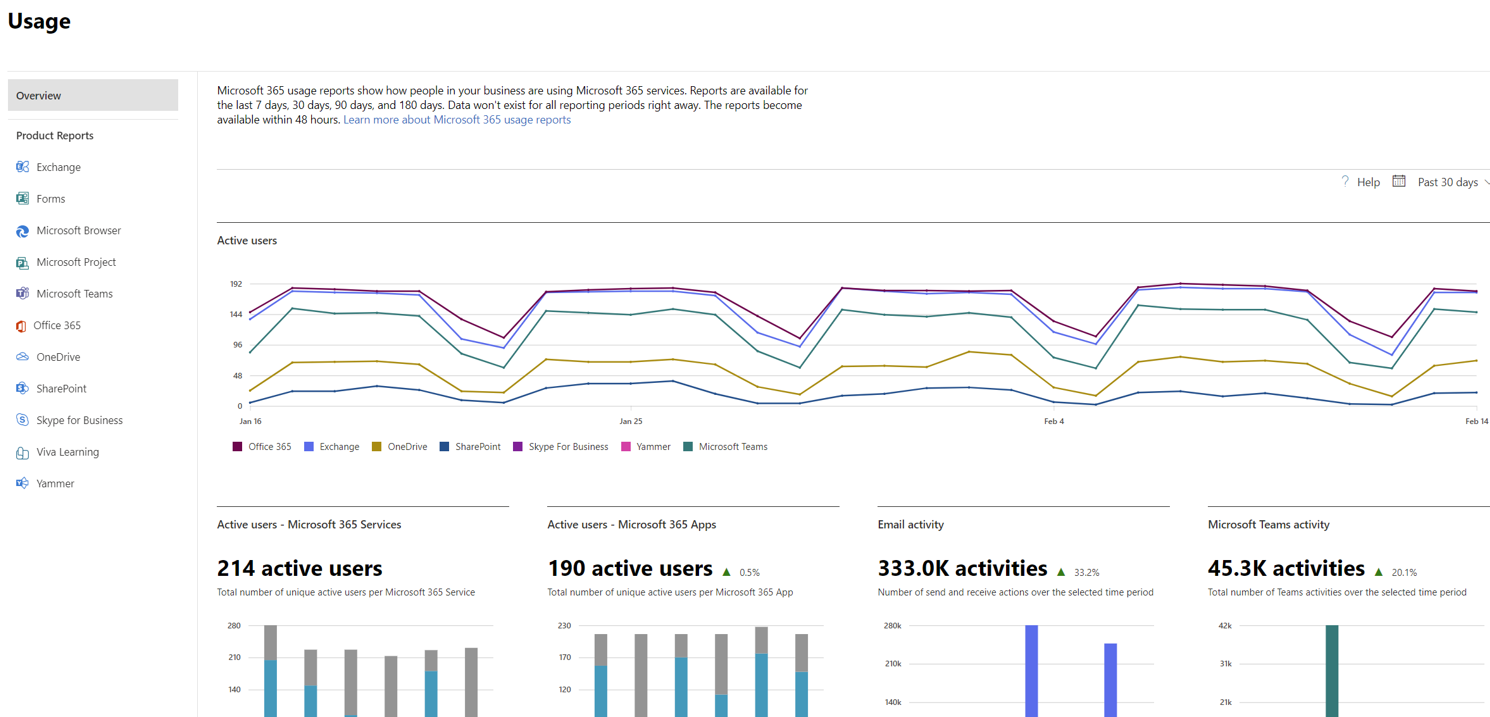
Usage reports in Microsoft 365
Microsoft 365 is a suite of applications and services that include productivity tools like Word, Excel, PowerPoint, and many more. With Microsoft 365, users can create, share, and collaborate on documents and projects with colleagues, clients, and partners from anywhere in the world. However, with all the features that come with Microsoft 365, it can be challenging to keep track of usage and user activity. This is where Microsoft 365 Usage Reports come in.
Usage reports in Microsoft 365 provide valuable insights into how users are utilizing the various applications and services in the suite. This information can be used to optimize usage and ensure that users are getting the most out of Microsoft 365.
There are several types of reports available in Microsoft 365, including usage reports for specific applications like OneDrive, SharePoint, and Teams, as well as overall usage reports that provide insights into how users are interacting with the suite as a whole.
The SharePoint Usage report, for example, provides data on the number of files and documents uploaded to SharePoint, as well as how frequently users are accessing these files. This data can be used to identify areas where more training or resources may be necessary, or to determine which teams or departments are making the most use of SharePoint.
Similarly, the OneDrive Usage report provides insights into how users are utilizing the cloud-based storage solution, including the number of files uploaded and the amount of storage space used. This information can be used to identify trends in how users are using OneDrive and to optimize storage allocation.
The Teams Usage report provides data on how frequently users are engaging with the collaboration tool, including the number of messages sent, calls made, and meetings scheduled. This information can be used to identify areas where more training or support may be necessary, or to determine which teams or departments are making the most use of Teams.
Overall usage reports provide a more comprehensive view of how users are engaging with the suite as a whole. These reports include data on the number of active users, the number of files shared, and the amount of storage space used across all applications and services.
Microsoft 365 Usage reports can be accessed through the Microsoft 365 Admin Centre and can be customized to fit the specific needs of individual organizations. Reports can be generated on a daily, weekly, or monthly basis, and can be exported to Excel for further analysis.
In conclusion, Microsoft 365 Usage Reports provide valuable insights into how users are utilizing the suite of applications and services. By analyzing this data, organizations can identify areas where more training or resources may be necessary and optimize usage to ensure that users are getting the most out of Microsoft 365. With these reports, organizations can ensure that they are maximizing the value of their investment in Microsoft 365.

